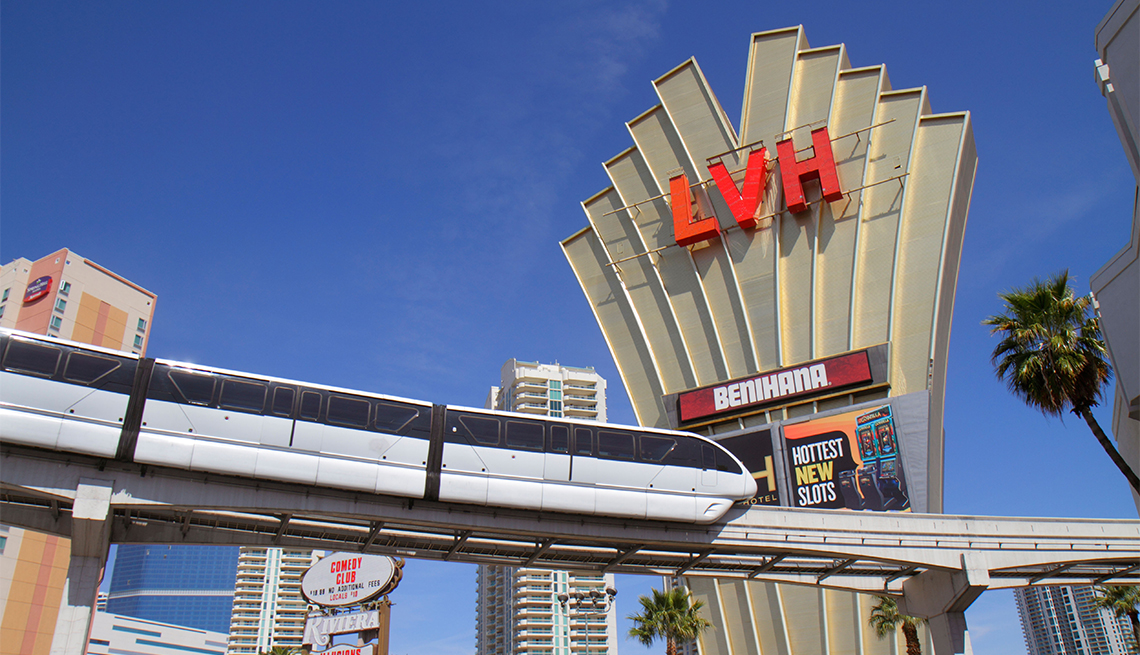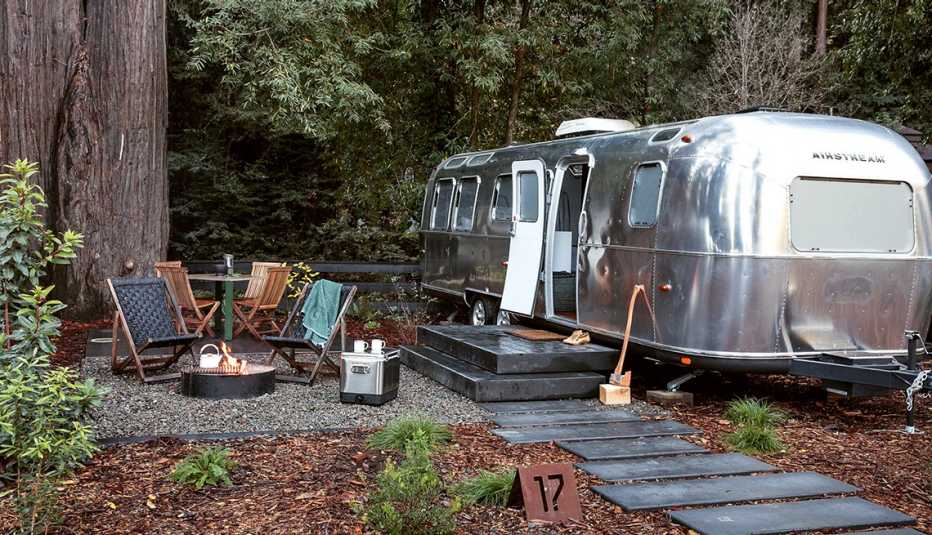Staying Fit
Just walking from one Strip casino to its neighbor can take 15 minutes. The most heavily traveled part of this four-mile stretch has wide sidewalks and elevators to pedestrian bridges that cross Las Vegas Boulevard. The city strives to abide by the federal 1990 ADA law, with curb cuts and accessible restrooms. Use walkways or free wheelchair-accessible trams that run between some resorts on the Strip’s west side, or ride the Las Vegas Monorail. It serves more than a half-dozen properties on the east side, including MGM Grand, Paris, Bally’s and Caesars Palace, and is also wheelchair accessible; riders can buy day or multiday passes. If you can’t walk long distances, you can rent an electric scooter at some casino resorts.
Buses


AARP Membership— $12 for your first year when you sign up for Automatic Renewal
Get instant access to members-only products and hundreds of discounts, a free second membership, and a subscription to AARP the Magazine.
To traverse the Strip or go downtown, board the double-decker Deuce bus. It’s wheelchair accessible and has rates for those 60 and over. (You must get your reduced-fare transit ID card at the Bonneville Transit Center.) The free Downtown Loop bus goes to the Fremont Street Experience, the Arts District, Symphony Park, Pawn Plaza and outlet stores.
Taxis/Ride sharing
Taxis sit outside hotels; those outfitted for wheelchairs can be ordered by phone. Ride-hailing vehicles now far outnumber cabs. It’s unusual to wait more than five minutes for an Uber or Lyft in tourist areas. They typically cost half what a taxi would, and sometimes even less.
Accessibility
Vegas rolls out the welcome mat for those using walkers or wheelchairs. The most heavily traveled part of the four-mile Strip has wide sidewalks and elevators to pedestrian bridges that cross Las Vegas Boulevard.
































































